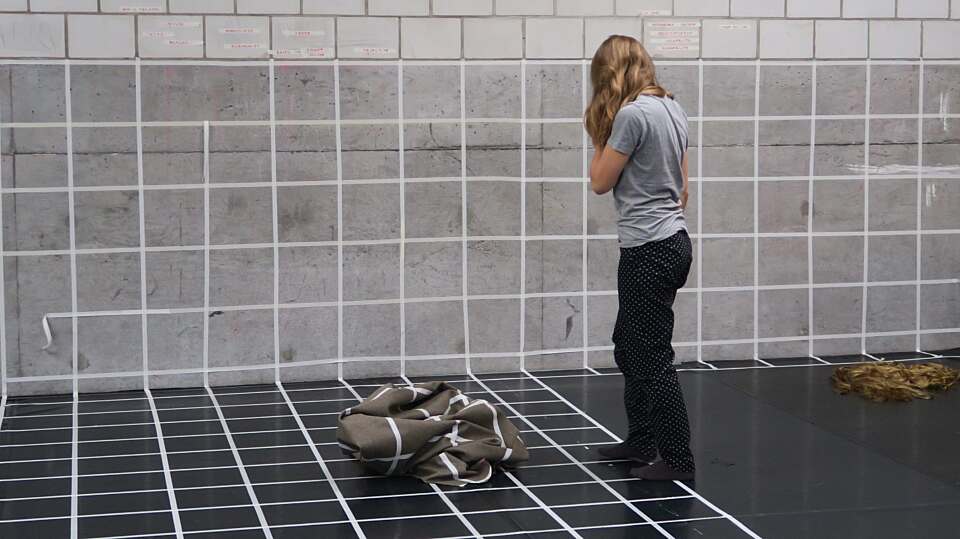See that my grave is kept clean
There is a famous etching by Albrecht Dürer that represents the beginning of perspective drawing. It’s a strange image: a sensuous woman is depicted lying on a table behind a grid.

Facing her on the other side is a man attempting to reproduce what he sees on a surface in front of him, using the grid as a reference system to pinpoint, to measure, to see. Although the woman is caught and fixed by the grid, she will never be entirely contained. Her depths, durations, experiences, thoughts cannot be flattened. She just doesn’t fit.
The three figures (the woman, the grid and the observer) can be considered as a system. This system contains, controls and limits but also falls short: when looking at all three figures together our gaze travels between what the system captures and what exceeds, and both are active and present. In this sense, the etching tells not only of the history of perspective drawing, it also depicts the desire to capture bodies – changing, breathing, sensing – within a geometrical, rational and linear space. Failing to do so, it discreetly reveals the spaces it cannot contain.
If we forget for an instant the emblematic role this image has played in the history of perspective drawing, the articulation of the figures in the etching also holds other stories, other perspectives. We could for instance focus on the woman lying on the table, and question the image from her position. But, how can we access the depth, durations, sensations, thoughts that her figure suggests? Following the outline of her body, Adaline Anobile cut out the woman from the etching. Now, there is a hole in the image. The project begins with this hole.
Artist
Residencies
Kaaitheater
Kaaitheater
Rosas
Ultima Vez
